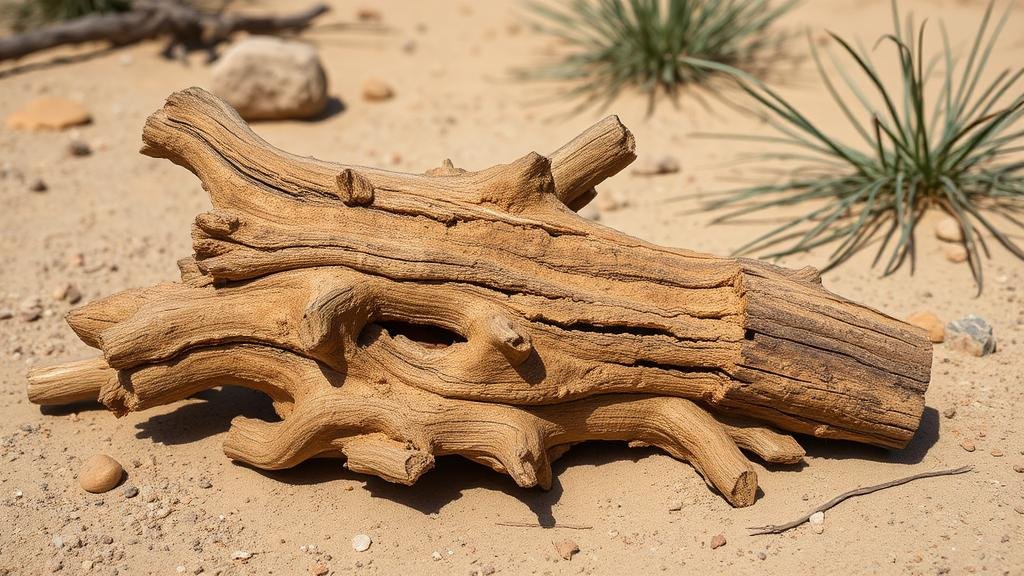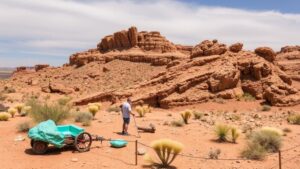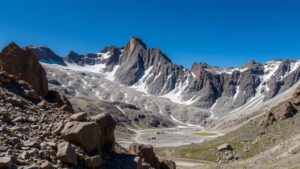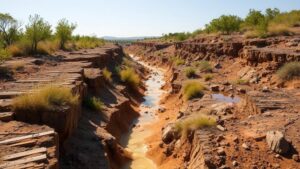Searching for agatized wood in the dry washes of the Mimbres Valley, preserved from prehistoric forests.
Searching for Agatized Wood in the Dry Washes of the Mimbres Valley
The Mimbres Valley, situated in southwestern New Mexico, is an intriguing geological site known for its rich deposits of agatized wood. This unique petrified wood, a remnant from ancient forests, captures the interest of rockhounds and mineral collectors alike. In this article, we will explore the characteristics of agatized wood, the geological history of the Mimbres Valley, practical tips for collectors, and the significance of preserving this natural treasure.
Understanding Agatized Wood
Agatized wood, also known as agatized fossil wood, forms through a process where the organic material of the wood is replaced by silica, often in the form of agate. This transformation results in stunning specimens that can exhibit a range of colors, patterns, and a vitreous luster. The average density of agatized wood can reach approximately 2.65 g/cm³, significantly higher than that of its original form.
Geological History of the Mimbres Valley
The Mimbres Valley was once part of an expansive prehistoric forest during the late Cretaceous to early Paleogene periods, approximately 70 to 50 million years ago. Evidence of this ancient ecosystem is preserved within the layers of sediment and volcanic activity in the region. area is characterized by dry washes which have eroded over millennia, exposing layers of agatized wood along streambeds.
Significant geological events, such as volcanic eruptions, contributed to the formation of silica-rich deposits. This silica infiltrated the wood, leading to the agatization process. The fascinating interplay of natural forces has created the rich deposits rockhounds seek today.
Tips for Collecting Agatized Wood
If you’re an aspiring collector eager to search for agatized wood in the Mimbres Valley, consider the following practical tips:
- Research: Prior knowledge about the area can greatly enhance your collecting experience. Familiarize yourself with the geology and climate of the Mimbres Valley to understand where to look.
- Go During Dry Seasons: Maximum accessibility to the dry washes is during the spring and fall. These seasons typically present lower rainfall, making it easier to spot exposed wood.
- Use Essential Tools: Equip yourself with a geological hammer, safety goggles, a field guide on local minerals, and a sturdy backpack. These tools will assist you in safely extracting specimens.
- Work Slowly and Carefully: Agatized wood can often be found near sedimentary rock surfaces. Inspect these areas meticulously, as quality specimens can be concealed within layers of dirt and debris.
- Respect the Environment: Ensure you follow ethical collecting practices, such as obtaining permission if necessary and respecting local regulations and conservation efforts.
Significance of Agatized Wood
Agatized wood not only holds aesthetic beauty; it is also valuable for scientific study. Analyzing this petrified wood can provide insights into ancient climates and ecosystems. Plus, agatized wood is often utilized in jewelry and decorative pieces due to its unique colors and patterns, which can increase its market value significantly, often ranging from $10 to $50 per pound, depending on the quality and rarity.
Conclusion
Searching for agatized wood in the dry washes of the Mimbres Valley is a rewarding endeavor for rockhounds and mineral collectors alike. With its rich geological history, stunning specimens, and significant scientific value, the valley presents a unique landscape for discovery. By understanding the composition of agatized wood, the geology of the region, and best practices for collecting, enthusiasts can deepen their appreciation for this remarkable natural phenomenon. Remember, each specimen is a piece of history waiting to be uncovered.



